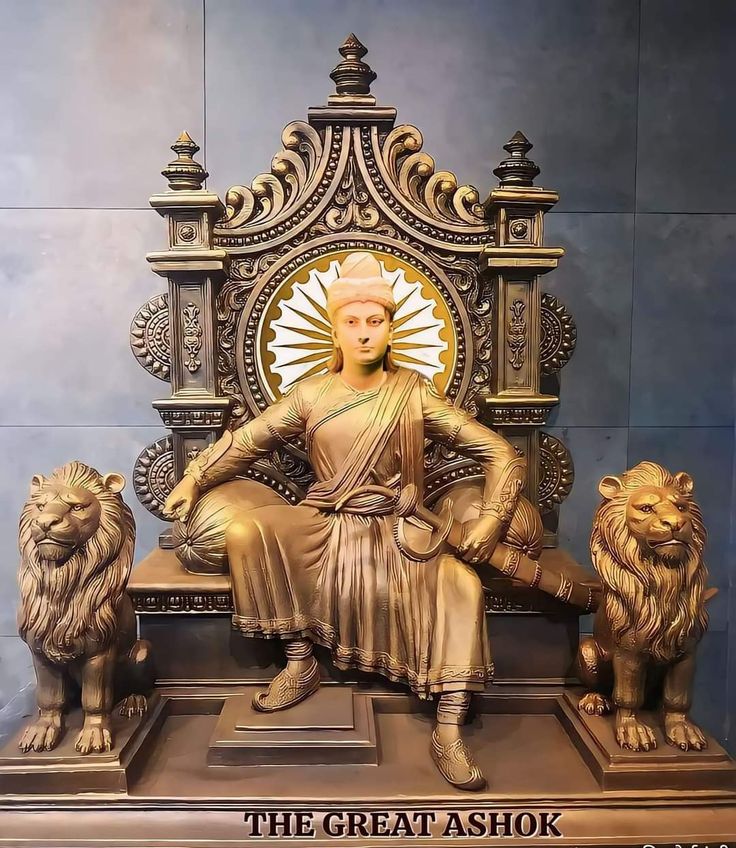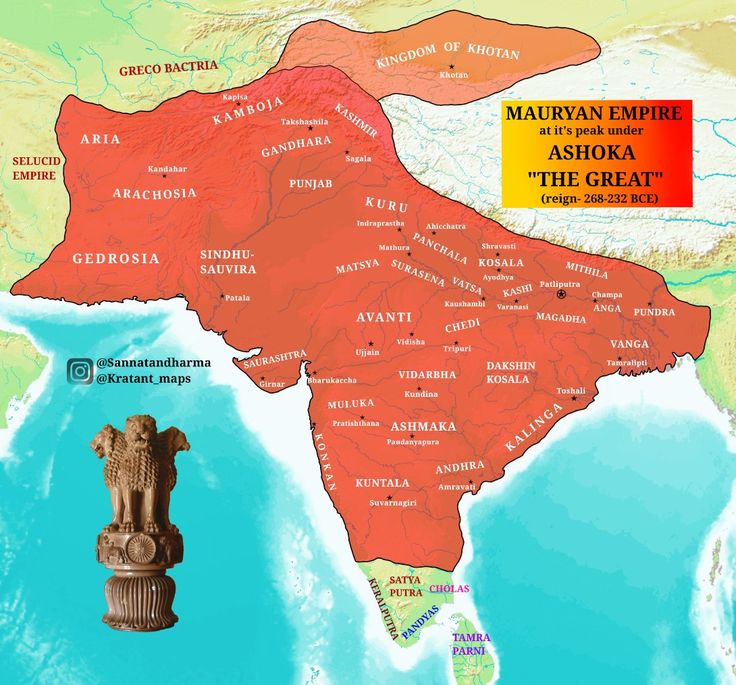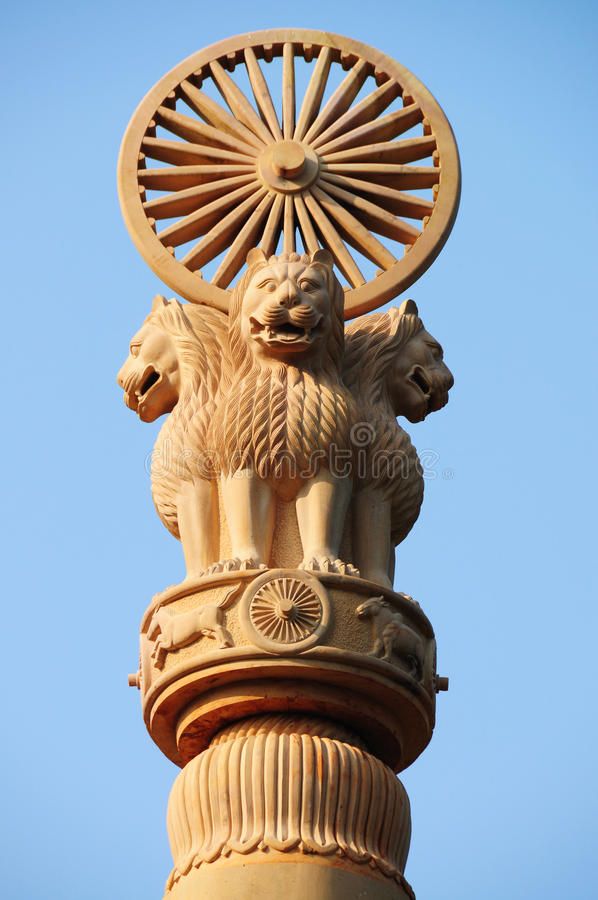Ashoka The Great - Emperor of the Maurya Empire
Introduction: Who Was Ashoka the Great?
Ashoka The Great – Emperor of the Maurya Empire, anchored in what is now modern day India, who is best remembered as one of ancient India’s most pious and visionary — and transformative — rulers. Born in 304 BCE, Ashoka was the grandson of Chandragupta Maurya, the founder of the Maurya Empire. Often called “Ashoka the Great,” he eventually ruled over most of the Indian subcontinent and is best known for his radical, dramatic transformation following a victorious but bloody campaign that left him an empathetic king, deeply converting to Buddhism, preaching non-violence, and renouncing war forever.

The Rise of the Maurya Empire
The Maurya Empire rose to power under Chandragupta Maurya with the guidance of the master strategist Chanakya. At its height, the empire stretched from present-day Afghanistan in the west to Bangladesh in the east. This political and military expansion laid the foundation for Ashoka’s rule, making it one of the largest empires in Indian history.
Ashoka’s Early Reign and Military Conquests
Before Ashoka was converted, he was known for the brutal and gory military campaigns. Appointed first governor of Ujjain, he soon crowned emperor and sought to expand the Maurya Empire by conquest. His early rule was defined by constant warfare, larger administrative consolidation, and quelling of revolts — all of which helped to create a unique authority over a vast region.

The Turning Point: The Kalinga War
Ashoka’s Kalinga War would turn out to be a watershed moment not only in his life but in his reign. Occurring c. 261 BCE, the First Punic War resulted in a horrible loss of life. More than 100,000 casualties are estimated. Seeing the pain inflicted by his military desire, Ashoka had a change of heart and made one of history’s great personal transformations, accepting nonviolence and renunciation as core to his life.
Ashoka’s Embrace of Buddhism
After being profoundly shaken by the devastation of wartime, Ashoka The Great – the Emperor of the Maurya Empire, sought solace through Buddhism. He became an ardent disciple and started spreading Buddhist principles like compassion, tolerance and respect towards all forms of life. Unlike other despots, he didn’t make religion a requirement, but instead sponsored people to choose their own religion, leading to moral, ethical lives.
Ashoka’s Dhamma: A New Way of Governance
Ashoka’s idea of “Dhamma” was not particularly religious—it was a moral code revolving around justice, non-violence and service-to-others. By implementing this philosophy, he hoped to establish a morally sound and peaceful society. So to ensure that justice was done to everyone, he appointed them Derby Dhamma Mahamatras (Dhamma officers beyond morality) across his newly integrated empire.
Ashoka’s Edicts: Messages Carved in Stone
To spread his message far and wide, Ashoka put his message on the road by chiseling them in stone inscriptions on roadside rocks and pillars, now known as Ashoka’s Edicts. Author in the language and script of each province over which he governed, these edicts graven upon public pillars directly articulated the principles of animal welfare, religious tolerance and compassionate, ethical governance. Today, they’ve become as close to a real-world repository of that history as possible, and are an incredible testament to the emperor’s transparency and accountability.
Impact on Indian Society and Religion
Ashoka’s promotion of non-violence and acceptance of Buddhism would go on to have tremendous influence over Indian society. In making Buddhism one of the three main religions—not only in India, but in Asia—he sent missionaries to Sri Lanka, Nepal, and into Central Asia, establishing a long tradition. His policies specifically advanced racial equality, ecological healing, and liberation of spirit from dogma.

Ashoka’s Legacy in Modern India and Beyond
The legacy that inspired Mahatma Gandhi, Martin Luther King and in turn the basis of modern India’s independence civil disobedience roots goes back to Ashoka The Great – Emperor of the Maurya Empire. His Ashoka Chakra (wheel) on the Indian national flag symbolizes progress and dharma. His lion capital at Sarnath is now India’s national emblem. Internationally, Ashoka is celebrated as a wise pioneer of values-based democracy and communal accord.
Interesting Facts About Ashoka
- Ashoka’s name means “without sorrow” in Sanskrit.
- He was one of the first rulers in the world to ban animal sacrifices.
- His rule extended over nearly the entire Indian subcontinent.
- He planted medicinal herbs and trees along roads for travelers and animals.
- Ashoka sent his son Mahinda and daughter Sanghamitta to Sri Lanka to spread Buddhism.
Conclusion: Why Ashoka Is Remembered as a Great Emperor
Ashoka is best known, not for his military subjugation and conquest, but for his transformation, from a violent, warmongering conqueror to a peaceful, spiritual ruler. His transformation, from a monstrous imperial warlord to a gentle proto-Pacifist, rendered Ashoka the unchallenged, uncontested evidence of the redemptive capacity of self-reflection and empathy to rehabilitate even the bloodiest history. His legacy is a reminder to each of us that the most profound hallmark of great leaders isn’t ambition, it isn’t swagger, it’s wisdom, it’s empathy, and it’s a sense of justice.
Customer FAQs
Q1: What made Ashoka different from other emperors?
A: Ashoka stood out for his moral transformation after the Kalinga War, choosing peace and spreading the values of Buddhism across Asia.
Q2: Where can I see Ashoka’s edicts today?
A: Ashoka’s edicts can be found in places like Sanchi, Sarnath, and Dhauli in India. Many are preserved in museums and archaeological sites.
Q3: Did Ashoka force Buddhism on his people?
A: No, Ashoka promoted Buddhism but respected all religions. His edicts advocate religious tolerance and harmony.
Q4: Why is Ashoka’s symbol on India’s national emblem?
A: The lion capital symbolizes courage, power, and pride, reflecting Ashoka’s values and India’s historical roots.
Q5: How did Ashoka influence modern governance?
A: His emphasis on ethical leadership, welfare policies, and moral law continues to influence democratic principles today.

Pingback: History of Mughal Empire - nearlibrary.com
Pingback: How does a ATM Machine work? - Topbloggs
Pingback: Mahatma Gandhi a Great Personality - Father of the Nation